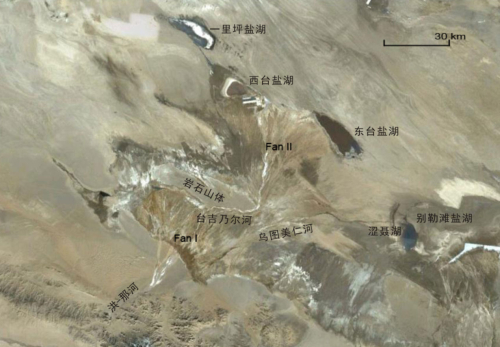The Qaidam Basin is famous for its rich reserves of oil and natural gas, salt lakes and other mineral resources. The salt lake in the Qaidam Basin contains 2.3 million tons of lithium, which is distributed in four salt lakes, such as Beletan Beach and East and West Taiwan. It accounts for 80% of China's total lithium brine resources, and its strategic resource status is self-evident. In recent years, Lithium's position in various countries' new energy strategies has been significant, prices have soared, and demand for power lithium-ion batteries has grown rapidly. Therefore, the extraction of lithium in salt lake brines has attracted much attention. Research work has been highly regarded and the pace of engineering has accelerated. Due to the long-term bias in the exploration and development of salt lake potassium mineral resources, the study and understanding of the Lithium deposits in the Salt Lake have a deep lack of research and understanding, which has led to the neglect of effective protection of symbiotic lithium brines in the large-scale exploitation of potassium brines. Lithium ore resources are in danger of being lost.
.Yu Junqing’s research team at the Salt Lake Geological and Environmental Laboratory has enriched the comprehensive study of the lithium salt lakes in the central Qaidam Basin, the content of elemental elements in the recharge water, the flow of water into the lake, the basin structure and geomorphology, and the depositional chronology of salt lakes. The understanding of the ore-forming processes and distribution rules of the Lithium deposit in the Salt Lake, and the need to strengthen the protection of resources under the current mining model. In summary: (1) Long-term lithium spring water from the Kunlun Mountain High-Temperature Hot Springs is flooded into the terminal salt lake, where it is vaporized and enriched (Fig. 1); (2) The Hung-Na River flows mainly to Bele Beach in front of the piedmont alluvial fan. After the northward advancing and the Fanqian River diverted to the north, only the current distribution pattern of lithium-bearing rivers was formed (Fig. 2), which explained the reason for the largest reserves of Bieletan lithium deposits in the study area; (3) Lithium sources and Cenozoic volcanic eruptions It is related to deep magma chambers and Kunlun large fault activity. Continual remote transmission of lithium-bearing hot water to salt lake is the geomorphic and hydro-climatic cause of mineralization; (4) The company should rapidly change the potash fertilizer production model according to the distribution pattern of lithium and the characteristics of the deposits, and effectively avoid The loss of lithium.
After implementation of large-scale halogen extraction and production of potash fertilizer, how to ensure the effective protection of precious salt lake lithium resources based on the distribution pattern of lithium in the study area and the characteristics of the deposits has been a very urgent and important task in the past and now, and this research has implications for the salt lake enterprises. Important theoretical and practical guidance.

Figure 1 The Doji Indicating Hydrothermal Field is located at the intersection of active faults in the Kunlun Large Fault, foothills of Osaka, Buaka

Figure 2 Alluvial Fans of Hung-Na River, Fanqian River-Taijiner River, Taijiner River Alluvial Fan, Utu Meiren River, and Terminal Salt Lake Yiliping, Dongtai, Xitai, Bie Le Beach (including Shiyin Lake ).

